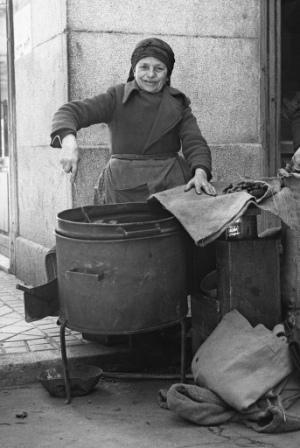If you read this and you are a person unhappy with your appearance, and looking for help or tips to stop eating and lose weight, you might be interested in this:
Want to be slim? Do you feel fear of gaining weight or becoming fat? Are you really worried about your figure and make you look fat? Have you consumed, consume, or want to consume less than 1000 calories a day? Did you leave or you are trying to stop eating?
If all this you answered yes, then sorry to say that you are suffering from Anorexia. This disease is associated with eating behavior in a severe disruption of the perception you have about your body image. You can look fat or disproportionate, even with a weight well below what is considered normal for your age and height.
This disorder has a negative impact on your family life, in social, academic and emotional. No society or your family that does not understand you, but you're the one who is not well and do not understand either yourself or the needs of your body.
In the first stage of this "diet" may not have problems and you think (falsely) that you will be happier the thinner re ... but if you keep this up:
1. You will more and more irritable, with sudden changes in your mood. Each time you will be more sad, to the point of isolating yourself socially. You'll be alone and friendless.
2. You'll have a hard time concentrating on your studies.
3. Come to abandon your tasks and responsibilities ..
4. You will have a greater severe kidney problems, intestinal and tears in the digestive organs.
5. Suffer from insomnia.
6. You hair fall.
7. You will always be constant cold and cold.
8. You will lose your period and, in the future, you can not have children.
9. Your heart will increasingly slow and weaken.
10. You can not defecate, but take laxatives.
11. Your skin will become gray and dry.
12. Your muscles will atrophy.
13. Your blood pressure will drop, so you often get dizzy.
14. You will atrophy nerves and parts of the brain due to lack of nutrients.
15. Finally, you will die or you kill yourself.
Are you still planning to stop eating and lose weight? then I ask you to look at these pages:
Do not you convinced? Then only you steal a few minutes of your time.
Maiara Galvao. She measured 170 cm, 14 years. He died on 01.06.2007, of heart failure caused by anorexia. Her dream was to be a model and just eat to stay thin. In September 2006, she was taken to the doctor first, as she had no strength to climb the stairs of the school where she studied. After going through three different public hospitals, doctors discovered that she had anorexia nervosa. She was admitted to the Hospital Miguel Couto (Rio de Janeiro, Brazil), where she died.
Ana Carolina Reston. Model 21 years old, 174 cm and weight 40 kg. She was admitted on October 25, 2006 with a urinary tract infection that turned into kidney failure, and then a generalized infection. She died in hospital in Sao Paulo on November 15, 2006.
Luisel Ramos. Uruguayan model of 22 years old, 44 kg. She died on 08.02.2006 by heart failure caused by anorexia. She had taken a crash diet based on lettuce, which took place during the 3 months prior to her death. her BMI was 14.5. WHO considers a BMI below 18.5 is underweight and below 16, severe thinness.
Eliana Ramos. Sister of Luisel Ramos. On February 13, 2007 was found dead at the home of her grandparents in Montevideo, at age 18. According to the autopsy died of cardiac arrest as a result of the severity of the suffering anorexia.
Sobrado Carla Casalle. 22, fashion student aspiring to enter the runway. She died in November 2006 in the Portuguese Charity Hospital where he was hospitalized for some three days. She died after two heart attacks as a result of anorexia. It measured 174 cm and weighed 55 kg.
Isabelle Caro. She suffered from anorexia nervosa since age 13. Measuring 165 cm and weighing 33 kg. She was hospitalized for the first time at age 20. In 2006 went into a coma with a weight of 25 kg, this time the doctors said she would not live. She died on November 17, 2010, in the Xavier-Bichet Hospital of Paris after spending two weeks admitted with acute respiratory failure caused by her extreme malnutrition. In January 2011, her mother, Marie Caro, after not bear the guilt for the death of her daughter, committed suicide.
You were now convinced?? stop eating (or eating less) does not make you beautiful, it makes you more vulnerable.








